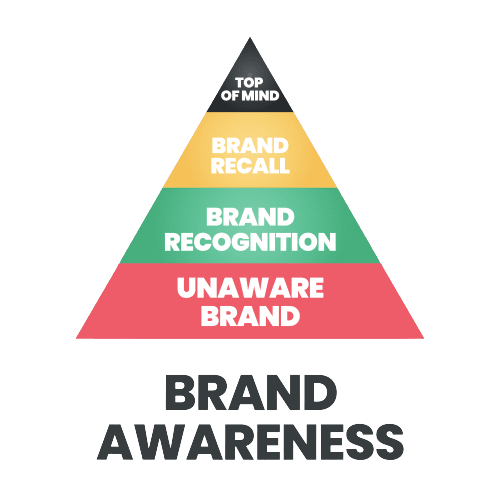
When it comes to creating a memorable brand, consistency is key. Think of your favorite brands - chances are, their logo, design, and overall customer experience are top of mind. But how do they achieve this level of impact and influence? The secret lies in brand guidelines - the recipe for a high-impact and reliable brand.
From messaging to design elements, every ingredient plays a crucial role in building a successful brand. And the special sauce that brings it all together? Brand guidelines. These guidelines provide the foundation for a brand to establish a consistent and recognizable identity, making it instantly identifiable to customers.
Don't leave your brand's success up to chance - invest in creating and following brand guidelines. Build a reliable and influential brand that customers will remember and trust.
What are Brand Guidelines?
Brand guidelines allow you to communicate your brand message with clarity and tap into the heartstrings of your audience. Think of it as an instruction manual and rule book that lays out all the visual details and important notes about your company's voice, tone, and messaging.
Whether it's in a physical or digital booklet, it's filled with examples of what to do and what not to do. These guidelines comprehensively cover your entire brand identity.
Here are the elements of a brand guideline:
- Logos: full logos, secondary logos, and icons
- Color palette: primary and secondary colors
- Typography: font styles, sizes, and spacing
- Voice and tone: how the brand uses language and emotion
- Other imagery: photos, illustrations, and artwork

Why are Brand Guidelines Important?
Brand guidelines are the key to engaging people with your brand. They take your brand from an abstract concept to something tangible that every employee and team can understand and apply in their daily work. Brand guidelines are important because they:
Boost internal brand engagement
With brand guidelines accessible to everyone, employees no longer have to rely on their brand manager to approve every decision. This not only streamlines the creative process but also encourages greater collaboration and innovation across your organization.
Improve consistency
They not only explain but also demonstrate how to use the different elements of your brand to achieve a consistent look and feel across all touchpoints. By sharing your brand guidelines with internal teams, external partners, agencies, and freelancers, you ensure that everyone is on the same page. With a standardized set of guidelines to follow, your team can create cohesive and impactful materials that truly represent your brand.
Build brand recognition
In a crowded digital landscape, where consumers are bombarded with content, it's more important than ever to have a consistent brand identity that stands out. With brand guidelines, you can ensure that your brand is recognizable and memorable, no matter where your customers encounter it.

Brand guidelines serve as a roadmap for your company to create a consistent brand image that aligns with your values and messaging. It's not just about the visual elements of your brand but also the tone, style, and behavior. A style guide is an integral part of your brand guidelines that reinforces consistency in both written and visual content.
Creating a memorable and recognizable brand requires a unified external-facing expression, which can only be achieved by following a style guide. From graphic designers to community managers, every team member must be aligned with the same destination. Think of the brands that come to mind when you think of consistency. The same colors, language, and imagery are reflected in every piece of creative, giving off a cohesive and organized impression. Brand guidelines and style guides are what set these brands apart from the rest.
Elements of a Brand Guideline
Ready to build a brand identity that stands out from the crowd? We've got you covered! Follow these core brand guideline principles to create a brand that truly captures the essence of your company and resonates with your audience.
Mission Statement
Your mission statement is the beating heart of your brand, providing a guiding light for every decision and action you take. It sets the tone for your brand guidelines, anchoring all of its elements in a single, cohesive vision.
And while a mission statement is undoubtedly crucial to the success of any business, it's also an integral part of your brand style guide. By keeping your mission statement front and center, you can ensure that every piece of content you create aligns with your brand's core values and helps solve the same problem for your customers.

Mission statements inform you:
- Blog content
- Paid/sponsored content
- Ad copy
- Visual media
- Tagline
Buyer Persona
A buyer persona is crucial in defining your target audience, representing your ideal customer, and helping you frame the people you want to speak to. It can include demographic information like age, gender, job title, and professional challenges. Therefore, it's important to include your buyer persona in your brand guidelines, as it guides your content creation and ensures that your messaging is tailored to your intended audience.
Buyer persona guides you:
- Blog content
- Ad copy
- Visual media
Color Palette
Your brand's color palette is a selection of colors that informs every visual content your company creates. It is a vital part of your company's visual identity, and it depends on your brand's visual goals. Your color palette can be as simple or as complex as you want as long as you stick to the chosen colors.

When creating a color palette, you might want to dedicate certain colors to specific use cases, such as your logo or website design. It's also a good idea to include HEX or RGB color codes to ensure consistency across all branding materials. These codes are easy to find in most photo-editing or design software, and they help you maintain consistency and brand recognition.
A color palette guide:
- Logo
- Website design
- Printed advertisements
- Event collateral
Style Guide
A style guide is a game-changer for a brand that wants to stand out from the competition. It elevates an ordinary brand to a memorable one, providing an exceptional customer experience. Your style guide sets the tone for everyone who creates content for your company, from blog posts and scripts to website copy. Moreover, it helps external contributors, including freelancers and agencies, stay on-brand with ease.
The style guide informs you:
- Blog content.
- Video scripts.
- Website copy.
- Landing page copy.
- Public relations talking points.
- Customer service team's knowledge base.
- Paid/sponsored content.

Typography
Typography is another crucial visual component of your brand guidelines. It goes beyond just selecting the font for your company logo. Typography guidelines dictate the font and size for your blog design, website copy and hyperlinks, UX writing, microcopy, and more. The primary purpose of brand guidelines is to ensure consistency and coherence in a company's visual elements. These elements determine how customers recognize and perceive a brand.
Brand guidelines have a significant impact, transforming a company's mission or goal into a visually stunning experience for its customers. By utilizing these elements effectively, you can create brand guidelines that accurately reflect your company's essence. Though executing a vision may be challenging, defining strong brand guidelines can make it achievable.
8 Tips for Producing Engaging Content
Creating compelling content is essential for achieving sustained success in content marketing. However, it is not a simple task. In fact, the quality of your content can determine whether your website visitors choose to engage further or leave. Keeping these tips in mind can help you craft a better brand and style guide to help bolster your content.
1. Address Your Target Audience
Use your target audience as a reference to concentrate your writing and incorporate captivating details. To gain an empathetic understanding of your audience, conduct thorough research on your customers, interact with your social media followers, and carry out comprehensive persona research. Jot down your discoveries in your content marketing strategy to inform continuous blog content creation efforts.
Additionally, consider the following tactics to establish an emotional bond with your customers and develop captivating content:
- Support an emotional cause, nonprofit, or community endeavor and generate informative content.
- Demonstrate a genuine interest in your customers by empathizing with their needs in your blog content.
- Showcase your brand's story, values, and motivators on your website. Promote frequently.
- Foster a one-on-one relationship with your audience.
- Authentically engage with your personality, and strive to be as human and transparent as possible.

Remember that your customers' needs are constantly evolving, and you should implement ongoing processes to continually learn about your customers over time. This can help you better understand how to effectively persuade them.
2. Sprinkle in Real-Life Examples, Relevant Statistics, Quotes, and Resource Links
Building credibility is essential to creating effective content. Here are some strategies to help establish higher credibility with your content:
- Use links to authoritative sources to support or expand on your points.
- Incorporate relevant statistics to bolster your arguments or advice. While not every piece of content requires statistical evidence, one or two per piece is generally appropriate.
- Feature quotes from respected professionals in your industry. You can obtain these through personal interviews or by referencing published posts. Additionally, quotes can initiate future collaborations with influential industry leaders.
- Use real-life examples to lend credibility and illustrate key points. These examples don't necessarily have to come from your specific industry, as they can inspire your target audience to think creatively and look beyond their usual sources of inspiration.
3. Create an Emotional Appeal with Empathy
Pathos is a powerful tool for content marketers, but it can be challenging to use effectively. To successfully incorporate pathos into your blog content, try the following: Begin by understanding the emotions of your readers and customers. Empathize with their experiences and focus on what resonates with them.
Consider the meaning and purpose of your brand. Ask yourself questions such as:
- Who is your target audience, and how can you best serve them?
- How does your product or service improve people's lives?
- What problems does your business solve for your customers?
Use storytelling to create an emotional connection with your audience. Share real-life examples, success stories, and customer testimonials that illustrate the impact of your brand.
4. Offer Actionable Takeaways and Advice
In order to keep readers engaged and build trust and authority, it's important to reinforce your content with actionable advice. By providing concrete steps that readers can take to solve problems or achieve goals, you can demonstrate your expertise and establish yourself as a thought leader in your industry. When creating how-to guides or articles, walk readers through each step in detail, drawing on real-life examples and tried-and-true strategies. If space is limited, consider presenting your advice in bulleted lists or tables to make it more accessible.

To further enhance your content, consider using visuals to illustrate your actionable ideas in practice. Be sure to explain why you include the image and provide a link to the source to build credibility with your readers. With these strategies in place, you can create content that is both informative and actionable, helping you to engage your audience and build your brand's reputation.
5. Break Up Content Blocks with Images
Visual content can help break up long blocks of text, illustrate concepts, and provide context for your writing. To use images effectively in your content, follow these best practices:
- Introduce each image with a sentence or two, and explain why you included it. Always provide a link or source for your images.
- Aim to include 2-3 visual examples per 1,000 words of text or every few hundred words.
- Experiment with different types of media to engage your readers, such as screenshots, videos, interactive content, or infographics. Including a variety of media can make your content more engaging and shareable.
6. Subsections Should Be Categorized, Informative and Meaty
Subsections can help with the depth of content, allowing readers to scroll to the sections they are most interested in. To create engaging content with subsections, use the following elements:
- Subheaders: Each subsection header should be a summary of the section, follow a logical order within your article, and include secondary keywords for SEO. It's best to have your main title and subsection titles written in an outline before writing the entire piece to ensure your ideas are well-organized.
- Transitions: Each subsection should also have a brief transition to improve the flow of your writing, introduce new ideas, and support the overall theme of your content. It's crucial that all subsection transitions also reinforce the topic of your content; otherwise, your ideas can become confusing. Consistency ensures that your writing doesn't go off the rails.
- Word count: Keep subsections within 250–350 words.
7. Pen a Creative Title
Creating an engaging title is a crucial and challenging aspect of content creation. The title must pique the interest of the audience while effectively summarizing the content in a concise manner, similar to a catchy email subject or headline. The title should incorporate the primary keyword theme and be limited to 50-60 characters to ensure maximum SEO benefits. Emotionally evocative words, whether negative or positive, should be used to grab the reader's attention swiftly.

8. Don't Skimp On the Lead
Your lead must capture the reader's interest, convince them that your writing is worth their time, and give them an immediate understanding of what your article is about. Whether you choose a summary or descriptive lead, keep it concise, no more than 100 to 200 words. When crafting your lead, keep in mind the concept of a "nut graf." This is a paragraph or sentence that summarizes the main point of your story without revealing every detail.
Conclusion
Creating a brand that sticks in people's minds requires one essential ingredient: consistency. Take a quick glance at some of the world's most recognizable companies. A mere swoosh is enough to identify Nike, while golden arches scream McDonald's. And who could forget the iconic bitten apple of Apple?
These companies have firmly planted themselves in our minds, thanks in no small part to the power of strong brand guidelines. They're the glue that keeps their brand identities intact. Even if it's words and not logos, consistent digital content can move the needle that builds trust, and keeps your brand at the forefront of their mind.

